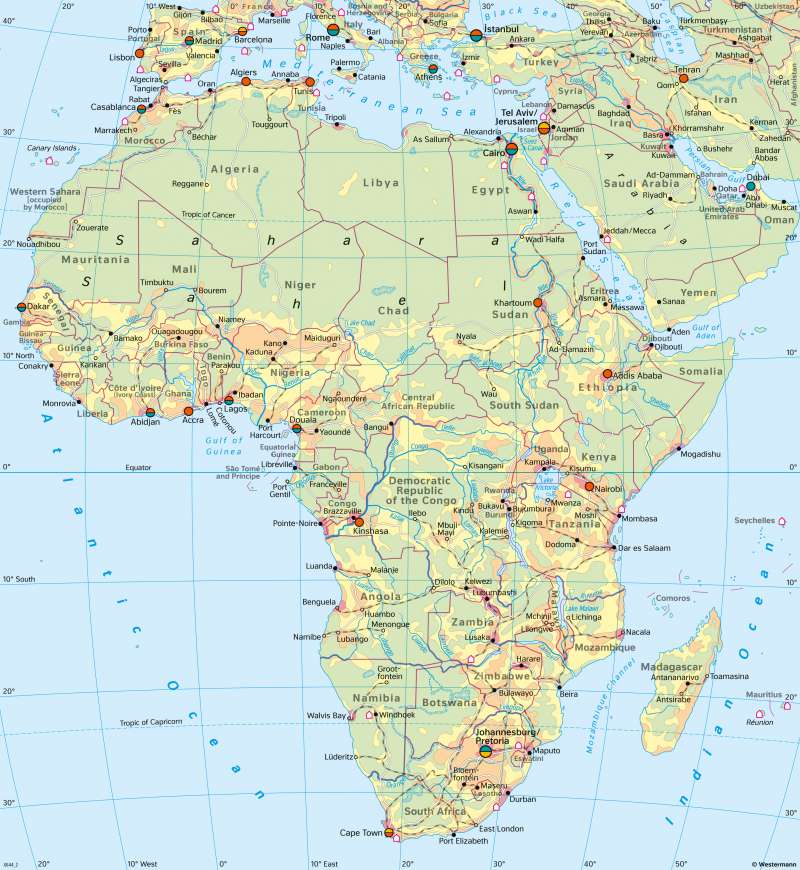Africa - Economy (overview)
Economy
978-3-14-100890-6 | Page 150 | Ill. 1

Overview
When compared globally, the economy of Africa is still heavily based on the primary sector. The industrial, service, and political-cultural centres are concentrated on the coast, while in the interior of the continent, with few exceptions, there are at best cities of national importance only. There are historical, political, and natural reasons for the structural weakness of the African economy: Extensive areas of the continent can only be used economically in a very limited way or not at all due to unfavourable natural conditions.
Intensity of land use, consumption of natural resources
It is no coincidence that the least developed countries in the world are located in Africa to a very large extent. The chart comparing the ecological footprint of African countries with the world shows that less intensely used countries such as Eritrea or D.R. Congo lie well below the average. Although other parts of Africa, including South Africa and Libya, do have a higher land requirement per person (calculated from the consumption of natural resources and the necessary compensation for it), the ecological footprint is only slightly higher than the global average. Especially the comparison with Germany and the United States underlines the differences between the continents.
The service sector, a typical indicator of the level of development of countries, is relatively weak in comparison. Service centres of global importance exist only in Cairo and Johannesburg, plus about a dozen cities of supranational appeal.
High-tech and light industry is almost entirely concentrated in about a dozen locations on the coast, with spatial focal points in Cairo, Algiers, Accra, and Lagos. Apart from Luanda, important locations for heavy industry are above all Johannesburg and maputo.
Because Africa is rich in mineral resources, they are the most important export commodity for many countries. In northern Africa, for example, the economy is largely based on the exploitation of oil and natural gas deposits. However, mineral wealth has been the undoing of many countries without strong administrations, because it is the cause of corruption, environmental destruction and civil war-like struggles. Mining and industrial development has contributed to significant urbanisation in the countries between southern Congo and South Africa.
Spatial focal points of agriculture are the core areas of historical African empires and the coastal and lowland areas developed during the colonial era. Small-scale agriculture is widespread, with plantation agriculture in coastal regions and the inland highlands of East and Southern Africa. In the drylands, semi-nomadism, oasis farming and large-scale irrigation dominate. Only in southern Africa modern farms and irrigated croplands exist while in the rainforest areas of Central Africa, scattered tribes of hunter-gatherers can still be encountered.
Along certain parts of the North African coast, some national parks and World Heritage sites are destinations of increasing tourism, which is considered the most important growing industry in many African countries.




